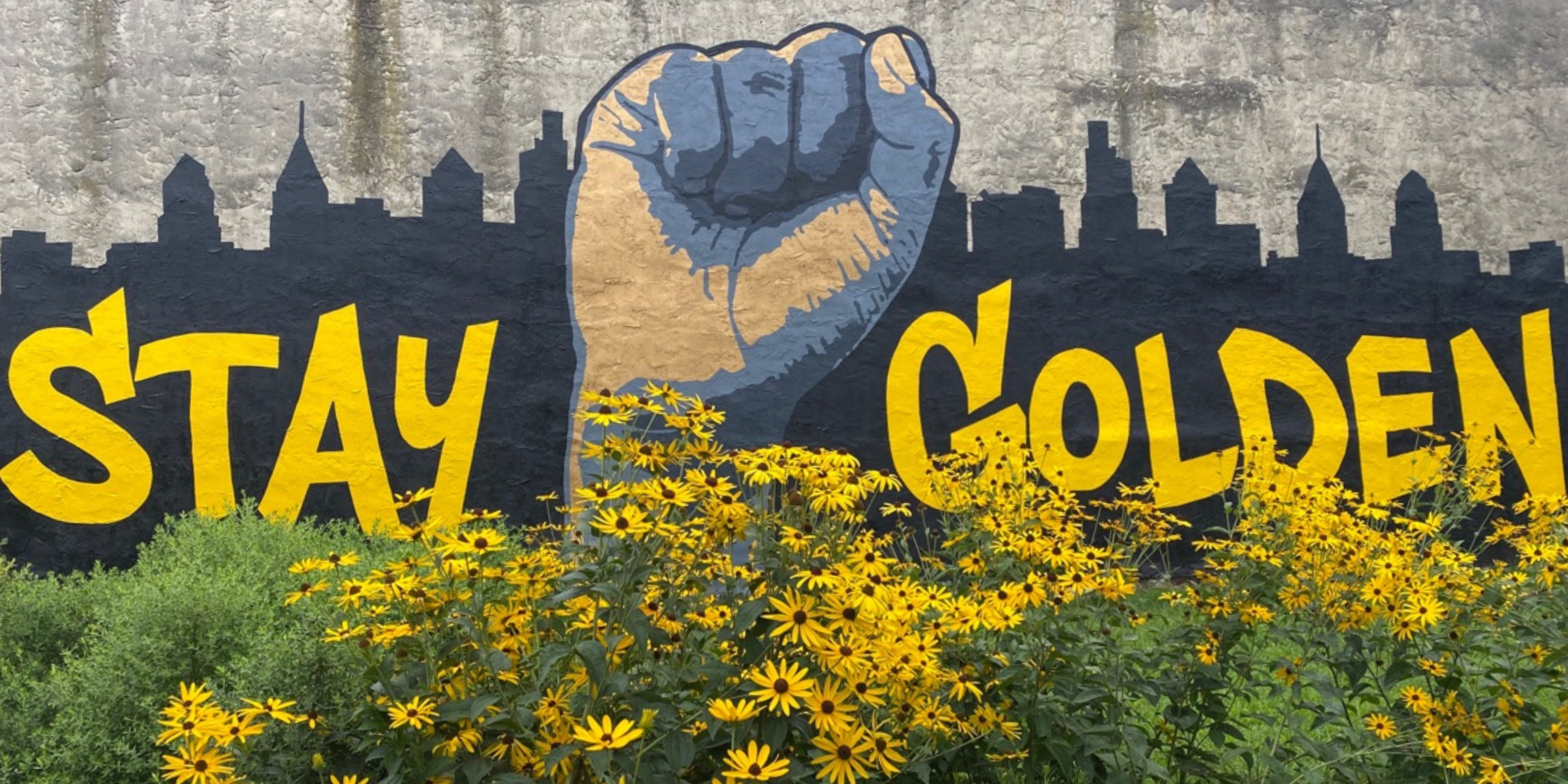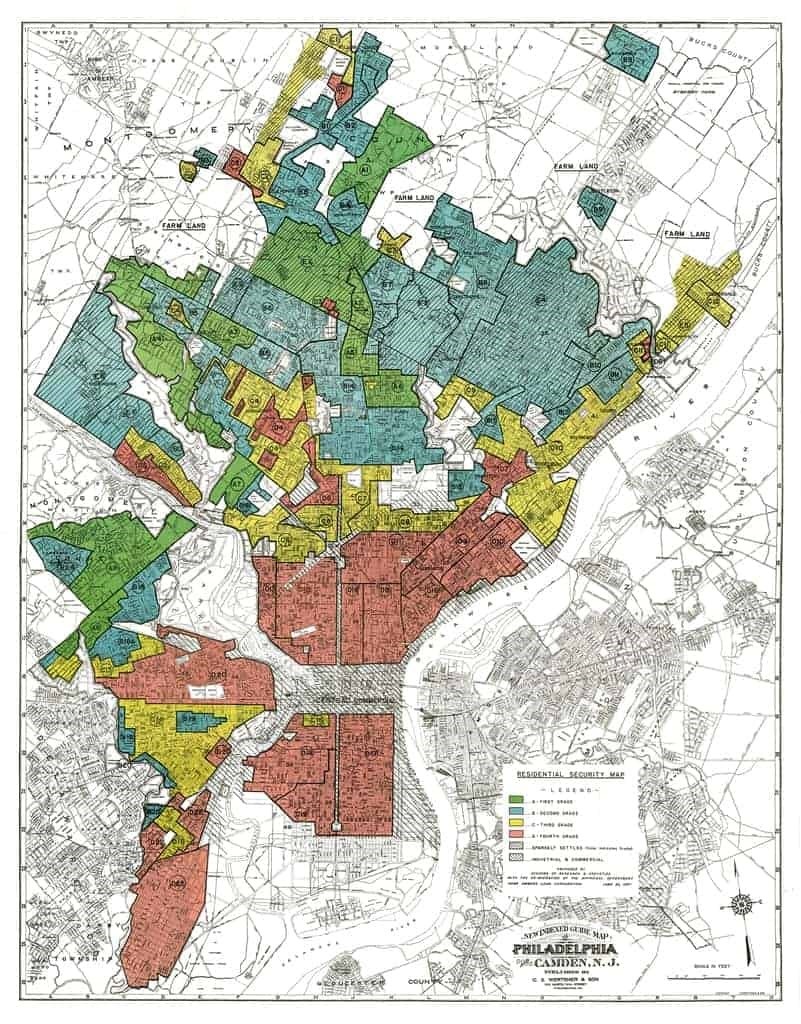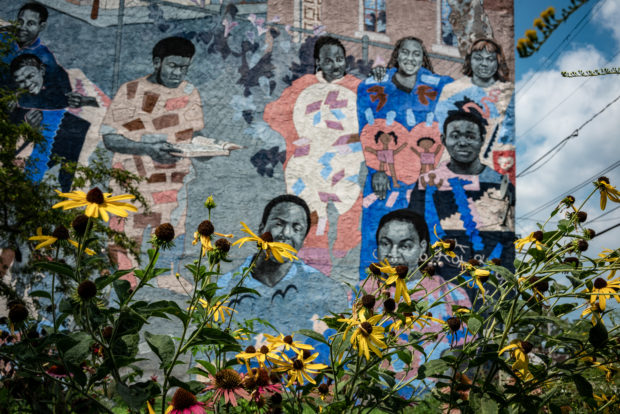We have much more to do and your continued support is needed now more than ever.
Creating Resilient and Equitable Cities through Vacant Lot Restoration

As we begin to feel the intensifying effects of climate change, there is an urgent need to address environmental and public health crises in frontline communities. In the Mid-Atlantic, we are experiencing more intense and frequent rain events as well as higher temperatures. Urban centers like Philadelphia will continue to experience amplified effects of climate change due to their built environment, with particular neighborhoods feeling the impact more so than others. To understand this disparity between neighborhoods, one must turn to the racist housing policy of the 20th century: redlining.
In an effort to address the long-lasting impacts of redlining while also working to create a more resilient Philadelphia in the face of climate change, National Wildlife Federation (NWF) piloted a project with the Pennsylvania Horticultural Society (PHS) to transform a network of vacant lots into a pollinator corridor. The partnership was aimed at exploring how cities with vacant lots can restore these sites to provide climate-resilient wildlife habitat, green stormwater infrastructure, equitable access to nearby nature, and create economic/job training opportunities.
Redlining was a discriminatory housing policy that deemed particular neighborhoods unworthy of investment and lending based on racial discrimination, shaping modern-day American cities like Philadelphia, Baltimore, and Detroit. Redlining made it difficult for individuals to purchase homes and to borrow against the value of homes they owned. It affected whole neighborhoods, reducing owner occupancy, lowering property values, decreasing housing quality, and increasing racial segregation.
Community members living in historically redlined neighborhoods experience a vast array of environmental injustices. There is a direct correlation between formerly redlined neighborhoods and vacant lot density, low urban tree canopy, extreme summer temperatures, high asthma rates, gun violence, and more (Office of the Controller, Philadelphia).

The National Wildlife Federation and PHS focused on two formerly redlined neighborhoods in Philadelphia: Mantua and Strawberry Mansion. These areas have high populations, high vacant lot densities, and are close in proximity to Fairmount Park (over 2,000 acres of green space).
In the fall of 2019, we installed 50 pollinator gardens on 26 different vacant lots. Overall, the project was a great success and provided lessons learned regarding best practices of garden design, maintenance, and community engagement.
One of the greatest successes of this project was the ongoing maintenance of the pollinator gardens. We contracted maintenance to a local landscaping company, resulting in well-kept gardens and high plant survivability. More often than not, ongoing maintenance can be the greatest challenge when it comes to vacant lot restoration, however, there are ample opportunities to expand these sustainable landscaping practices into workforce development and job-readiness training programs.
These neighborhood-based training programs employ local community members, providing jobs on a hyper-local level. In Spring 2021, working with PHS’ Roots to Reentry participants, a workforce development program for returning citizens, we replaced some of the plants that did not survive the initial year.
Programs such as this one and other Clean & Green initiatives, prove to be an excellent opportunity for community residents to become involved in vacant lot restoration projects by learning valuable hands-on skills and knowledge of sustainable landscaping while building neighborhood capacity for maintenance and a sense of ownership of the gardens.

It is clear that restoration of abandoned and/or vacant land is a multi-benefit solution that provides key habitat, community health, and workforce development opportunities as cities move toward greener, more sustainable ecosystems.
Projects such as this one in Philadelphia will serve as a model for conservation that centers equity throughout the country.
Is there vacant land in your community you would like to see transformed into usable community greenspace? Want to create a pollinator garden in your neighborhood? Check out your local city agency to find more details about these spaces, and how you can possibly “adopt a lot”. When it’s time to plant, turn to NWF’s Native Plant Finder and our Native Plant Collections to find plants that host the highest numbers of butterflies and moths to feed birds and other wildlife where you live!





















